Northern Pintail, Pijlstaart, Spießente, Arrabio, Ánade Rabudo
Spotted in the Alentejo region of Portugal. Northern Pintail sound
The Pintail or Northern Pintail (Anas acuta) is a widely occurring duck which breeds in the northern areas of Europe, Asia and North America. It is strongly migratory and winters south of its breeding range to the equator. Unusually for a bird with such a large range, it has no geographical subspecies if the possibly con-specific Eaton’s Pintail is considered to be a separate species.
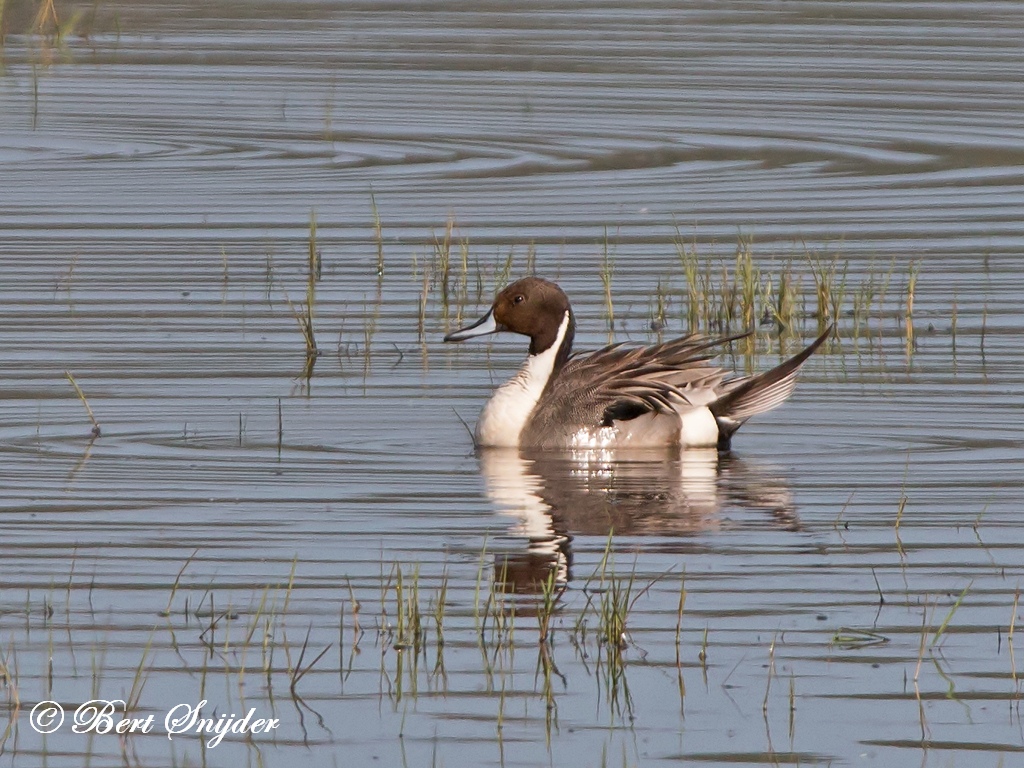
More Photos at the bottom of this page.
This is a fairly large duck, with a long pointed tail that gives rise to the species’ English and scientific names. The Northern Pintail’s many names describe the male’s two long black tail feathers, which in flight look like a single pin or twig (thus, the nickname sprig). These feathers are very distinctive, accounting for a quarter of the total length of the drake when in full plumage.
Fast and graceful fliers, pintails are equipped with long wings, small heads, and long necks that seem built for streamlined aerodynamics. Both sexes have blue gray bills and gray legs and feet. The drake is more striking, having a thin white stripe running from the back of its chocolate-colored head down its neck to its mostly white undercarriage.
The drake also has attractive gray, brown, and black patterning on its back and sides. The hen’s plumage is more subtle and subdued, with drab brown feathers similar to those of other female dabblers. Hens make a coarse quack and the drakes a flute-like whistle.
The Northern Pintail is a bird of open wetlands which nests on the ground, often some distance from water. It feeds by dabbling for plant food and adds small invertebrates to its diet during the nesting season. It is highly gregarious when not breeding, forming large mixed flocks with other species of duck.
This duck’s population is affected by predators, parasites and avian diseases. Human activities, such as agriculture, hunting and fishing, have also had a significant impact on numbers. Nevertheless, this species’ huge range and large population mean that it is not threatened globally.
Northern Pintail Birding Portugal
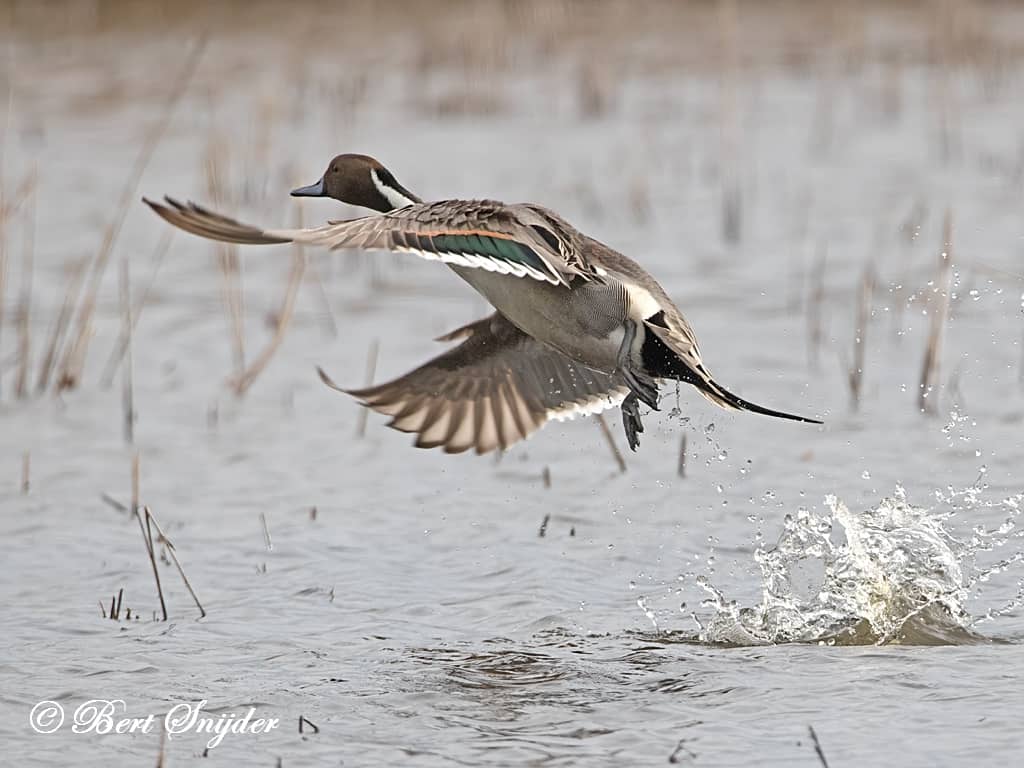
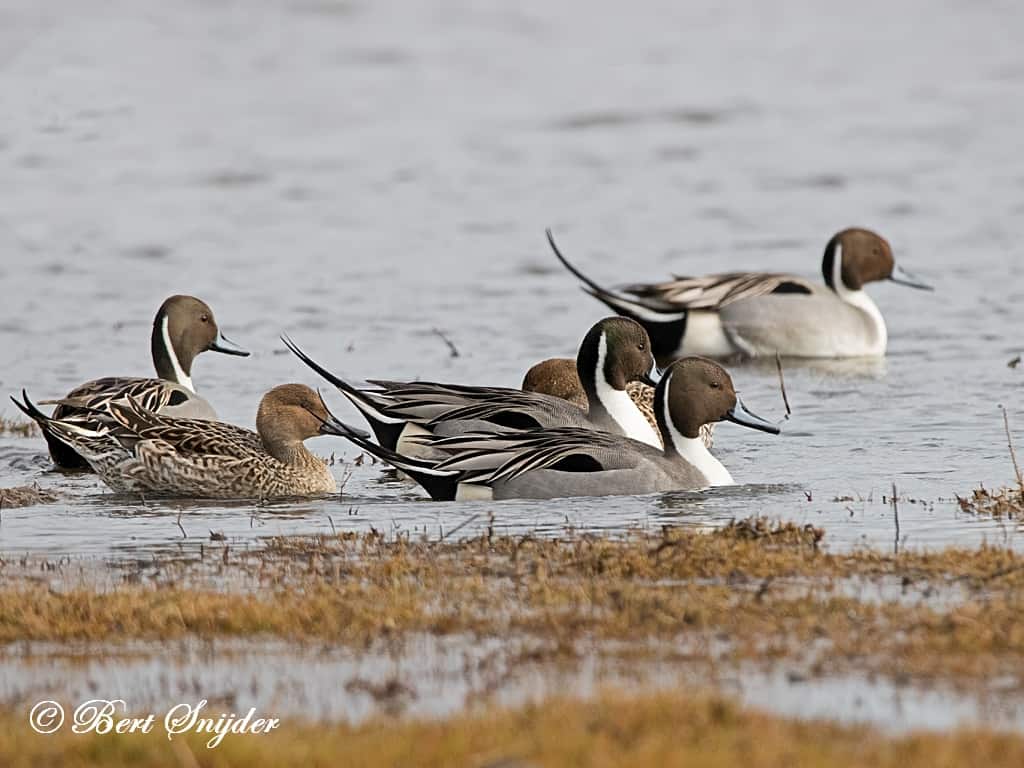
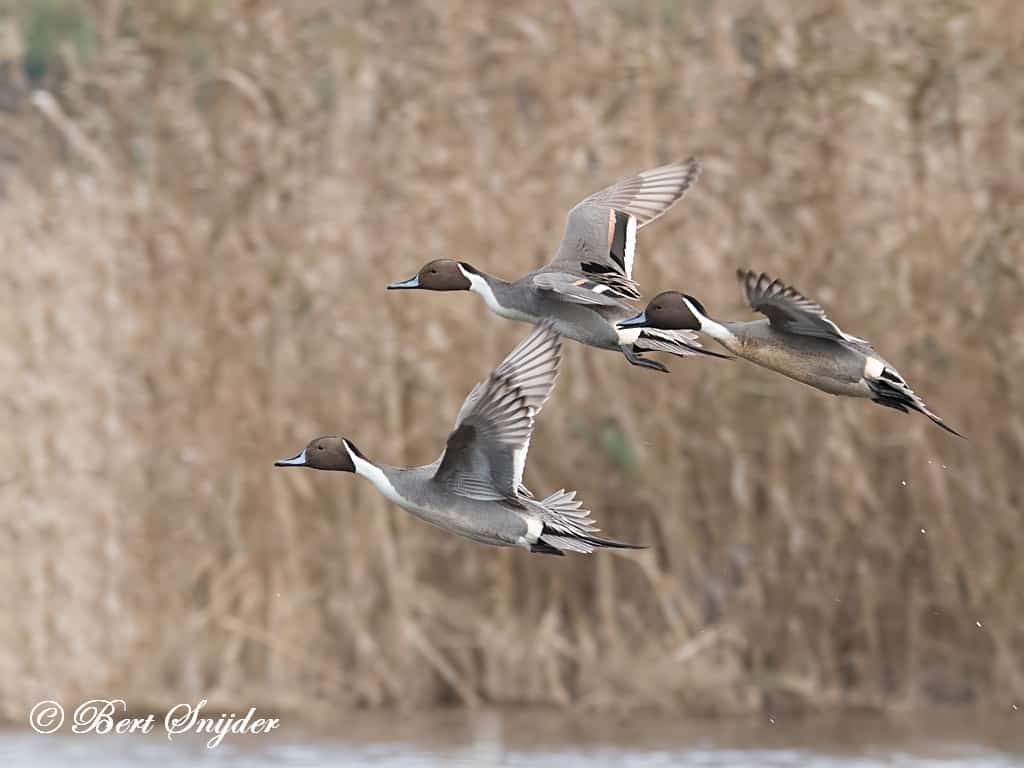
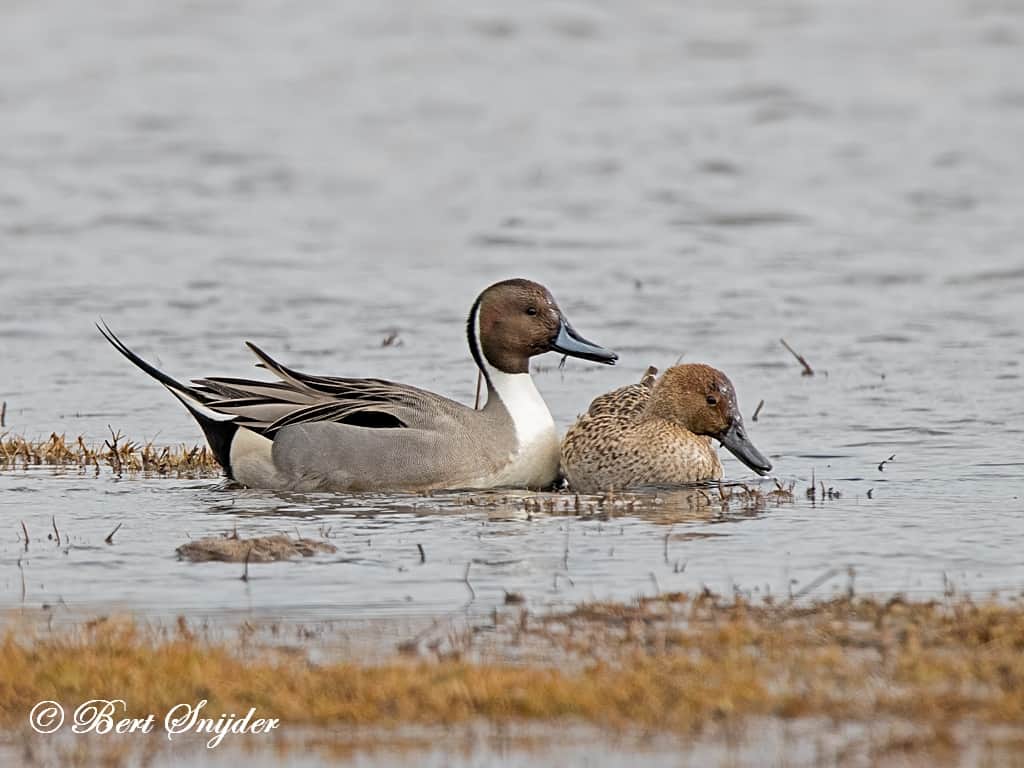
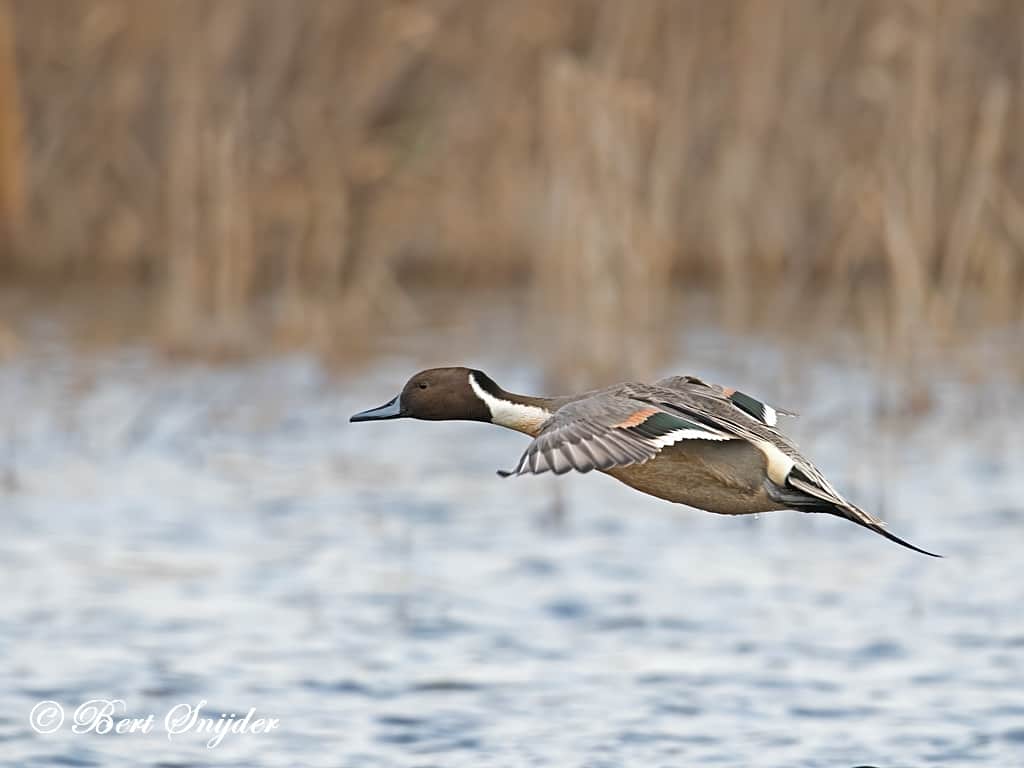
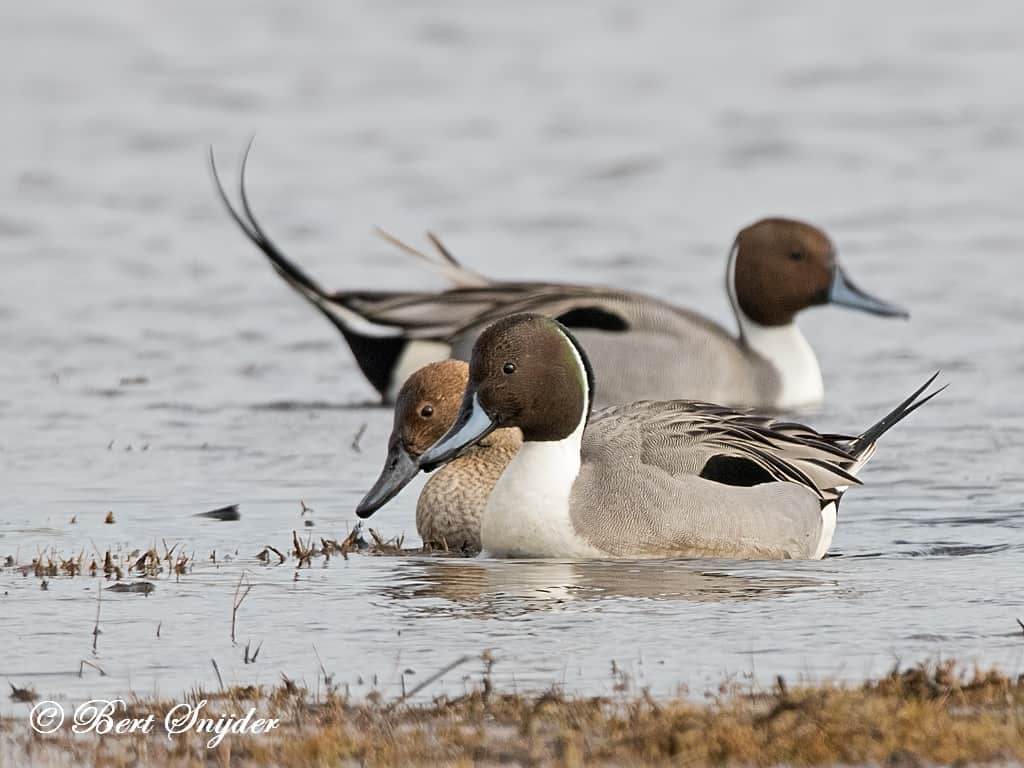
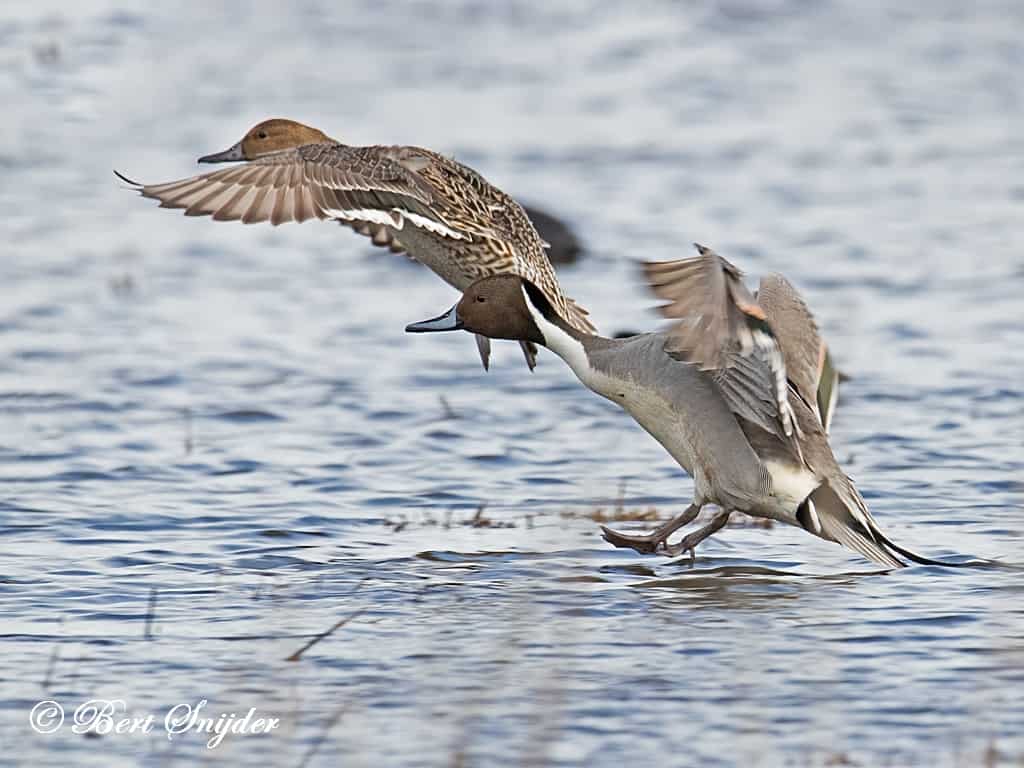
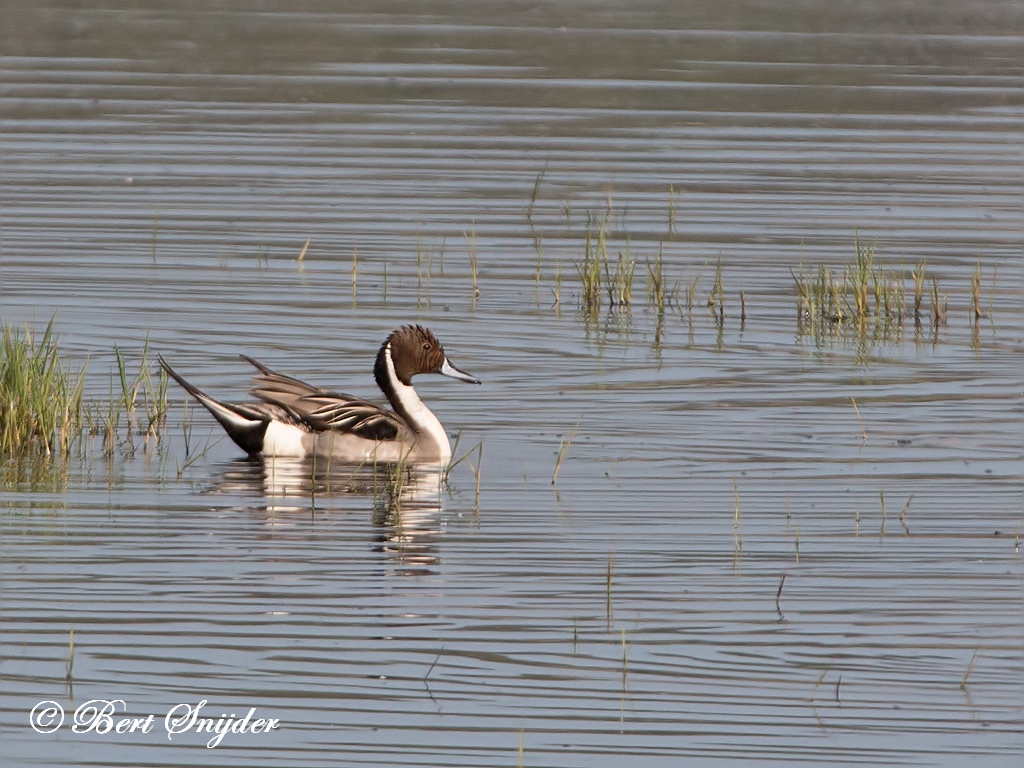
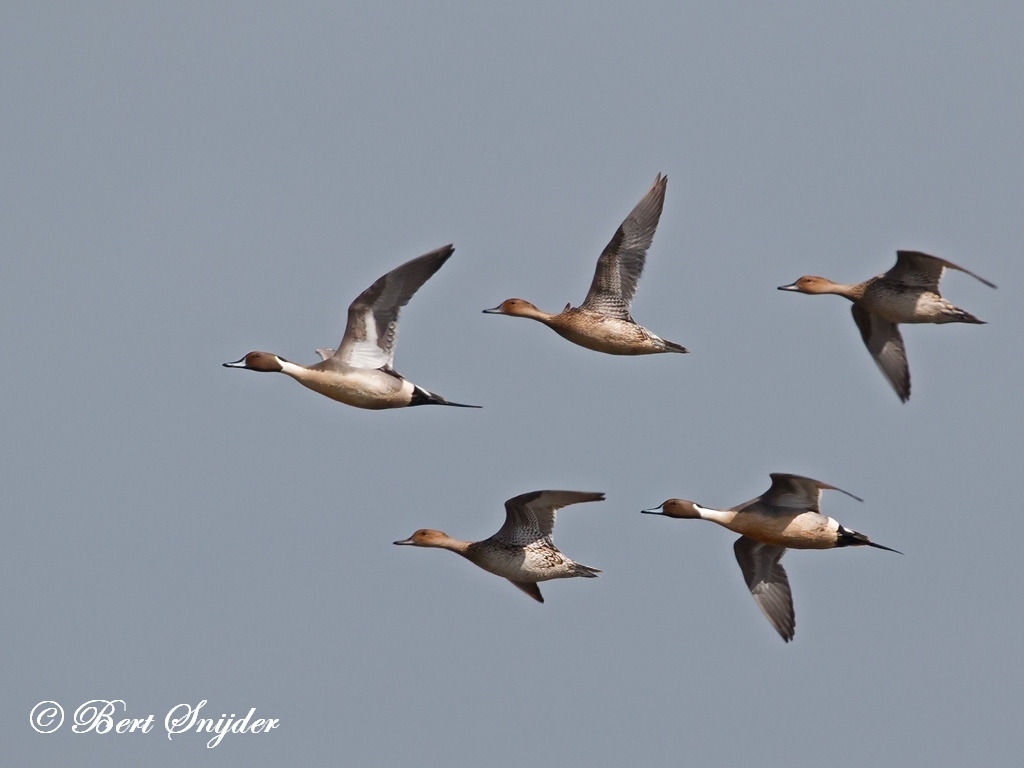
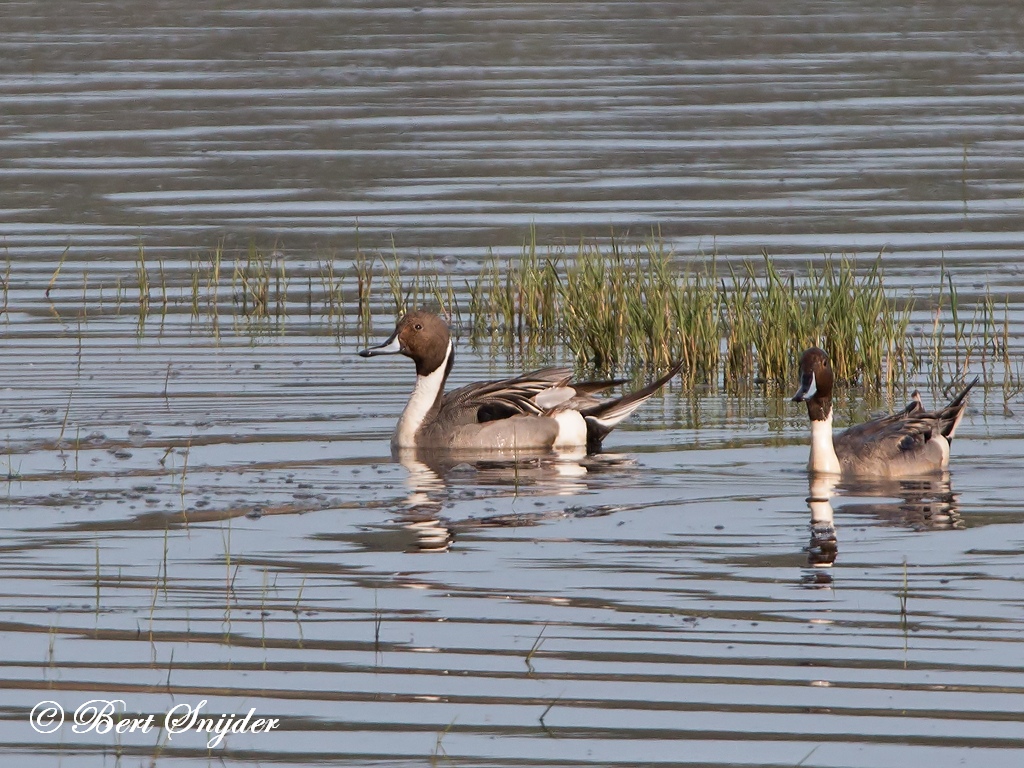
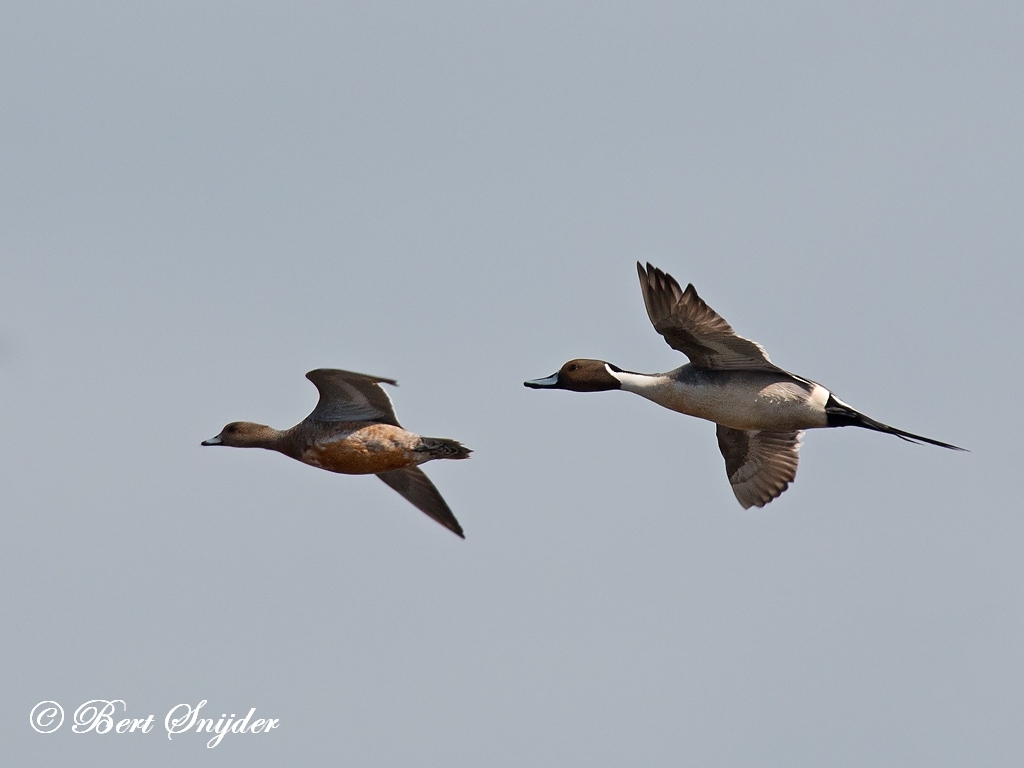
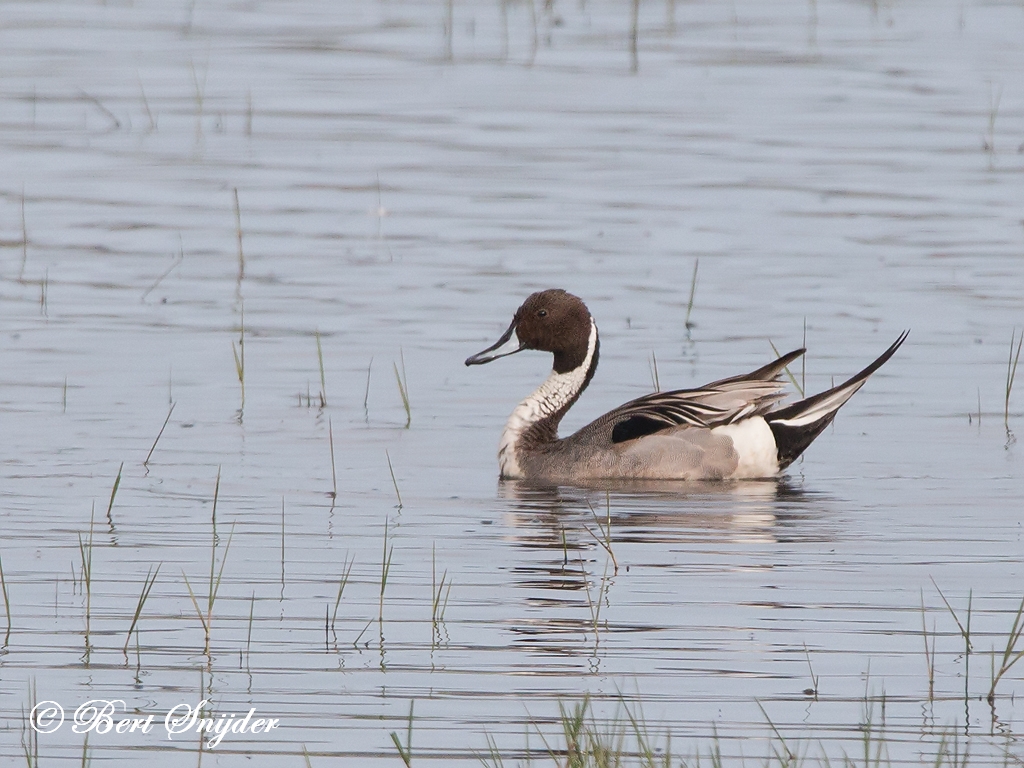
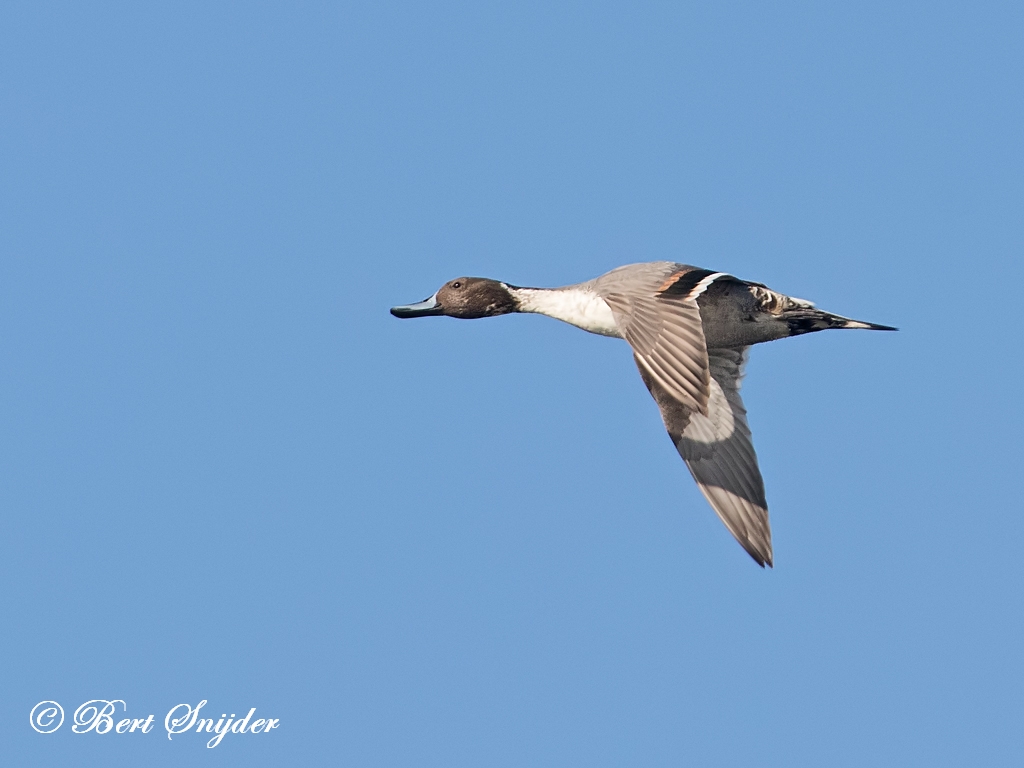
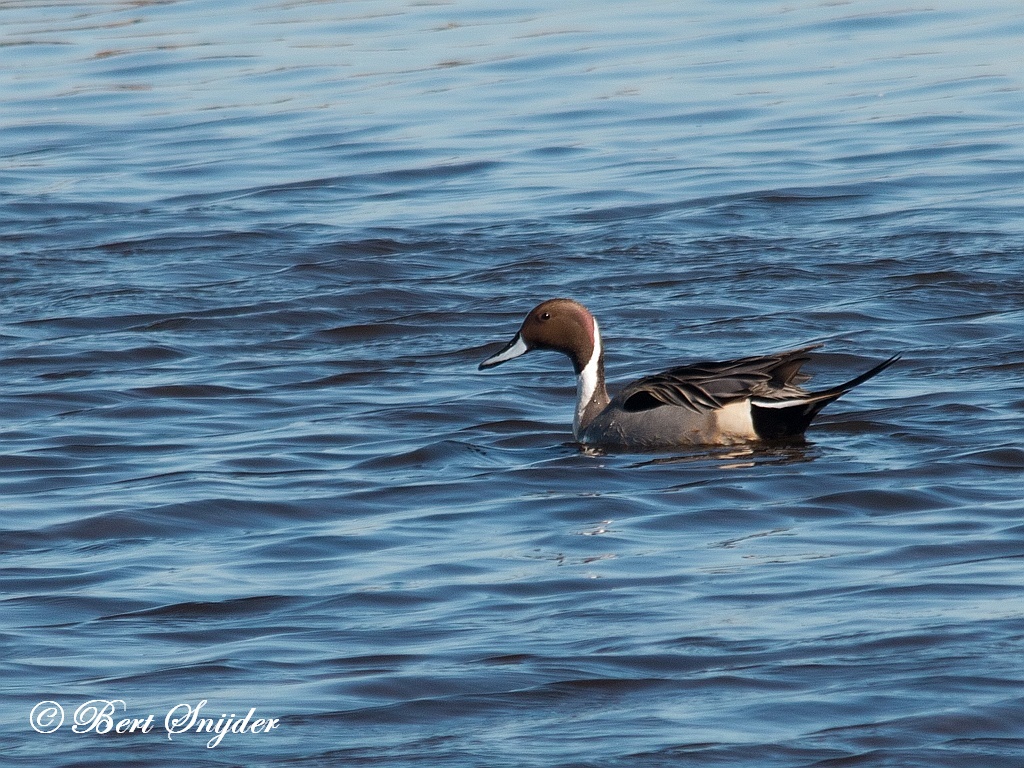
Other synonyms:
Afrikaans: Pylsterteend
Asturian: Coríu Rabullargu, Coríu Raullargu
Azerbaijani: Bizquyruq
Catalan: Ànec cuallarg, Coer, Cua de jonc
Valencian: Cua de jonc
Welsh: Hwyaden gynffonfain, Hwyaden lostfain
Danish: Spidsand
German: Spießente, Spiessente-acuta
Emiliano-romagnolo: Culanz
English: Common Pintail, Common Pintail Duck, Holarctic Northern Pintail, Northern Pintail, Pintail
Esperanto: Pintvostanaso
Spanish: Anade rabudo, Ánade rabudo, Pato golondrino, Pato Golondrino Norteño, Pato Guineo, Pato Pescuecilargo, Pato rabilargo, Pato Rabo-de-gallo, Pato rabudo
Estonian: pahlsaba-part, Soopart, Soopart, pahlsaba-part
Basque: Ahate buztanluze, Ahate buztanluzea, Ànec cuallarg
Finnish: Jouhisorsa
Faroese: Brimont, Brim-ont, Røtugás, Røtu-gás, Snælduont, Snældu-ont, Stikkont, Stikk-ont
French: Canard pilet, Canard pilet ordinaire, Pilet
Frisian: Pylksturt
Irish: Biorearrach, Lacha stiúrach
Gaelic: Lach Stiùireach
Galician: Ànec cuallarg, Pato rabilongo
Manx: Laagh Fammanagh
Haitian Creole French: Kanna pilè
Croatian: Patka Lastarka
Hungarian: Nyílfarkú réce
Indonesian: Itik Utara
Icelandic: Grafönd
Italian: Codone, Codone comune
Inuktitut: Ivurak, Kashluak
Japanese: onagagamo, O-naga-gamo, Onaga-gamo
Cornish: Hos Gwaf
Latin: Anas acuta, Anas acuta acuta, Dafila acuta acuta
Latvian: Garkaklis
Malay: Itik Ekor Runcing
Maltese: Silfjun
Dutch: Pijlstaart, Pijlstaart eend
Norwegian: Stjertand
Polish: rozeniec
Portuguese: Arrabio, marreca-arrebio
Romansh: Anda gita
Scots: Lach stiuireach
Northern Sami: Codone, Vuojaš
Slovenian: dolgorepa raca
Albanian: Rosa bishtgjele
Swedish: Stjärtand
Swahili: Bata Kipini
Turkish: Kilkuyruk, kylkuyruk
Travel Birdwatching Holiday Alentejo, Vacation Portugal for birders to see birds on your trip. Guided Birdwatching Tours and Trips.